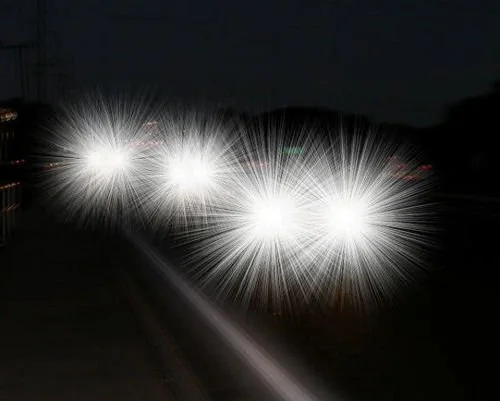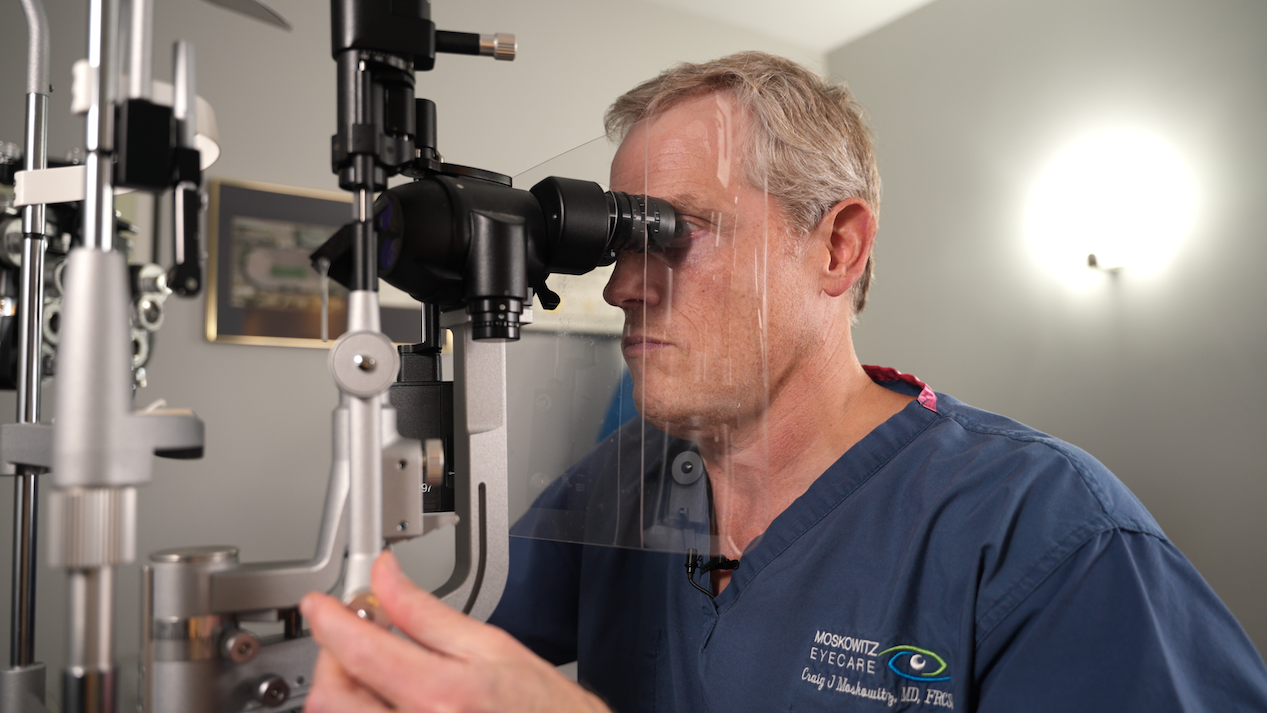LASIK vs. PRK vs. ASA
Understanding the Pros & Cons of Each Laser Eye Surgery
Corrective eye surgery can wildly improve a person’s lifestyle and even their outlook. It’s not just about waving goodbye to your eyeglasses or contact lenses and all the inconveniences they cause. It’s about seeing clearly and living freely.
It sounds corny, but it’s true.
But if you’re doing your research, you already know you have a decision to make: which type of laser eye surgery should I get? What are the differences? Which is best? Which is safest?
This guide will help you understand the outcomes, risks, recovery, and costs associated with three different procedures offered throughout New York City – LASIK, PRK, and ASA – so you can decide which one is right for you.
Questions so far?
Send me a note or keep reading below!
Above: these are the most important criteria to consider when evaluating these operations. “A” grades are assigned when a given criteria has a clear leader. “C” grades are assigned when the opposite is true.
LASIK is very different from PRK and ASA because it relies on cutting the cornea. ASA is a more refined version of PRK. It uses no alcohol or blade, and its treatment of the cornea is more gentle and sophisticated compared to PRK, which results in less haze, scarring, and post-op pain.
LASIK (laser-assisted in situ keratomileusis) is a laser surgery technique in which a thin flap is cut using your cornea's top layer to allow reshaping of the tissue underneath.
PRK (Photorefractive Keratectomy) is a laser surgery technique that removes the cornea’s top layer and reshapes the layers underneath, allowing the outer layer to grow back over time.
ASA (Advanced Surface Ablation) is a laser surgery technique that involves loosening the outer layer of the cornea (epithelium) to allow an excimer laser to reshape the deeper corneal tissue layers — all without having to cut a flap.
Typical Outcomes for ASA, PRK, and LASIK
ASA provides an accurate, custom correction, resulting in long-term improved vision whether you’re nearsighted, farsighted, or have astigmatism. ASA’s advanced laser technology allows for higher precision of correction than other methods.
In general, patients who choose ASA achieve better vision results than LASIK. While LASIK patients often experience improved vision immediately following surgery, they’re far more likely to experience complications over time (see the “Potential Risks” section of this guide further below or this article on the Risks of LASIK Surgery).
Before ASA surgery, a wavescan is completed on the cornea to evaluate higher-order aberrations – the factors that cause a patient to have blurry vision. The detailed scan allows for more accurate corrections to be made. In LASIK, the actual laser is done on a different layer than the one that the wavefront was done on before the procedure. This can cause distortion.
PRK is often considered the most conservative or low-risk choice – and that’s slightly misleading.
ASA Surgery has even fewer complications and better outcomes in many cases.
How Long Do The Operations Take?
In most cases, PRK, LASIK, and ASA take fewer than 20 minutes for the surgeon to perform. Actual laser time is approximately 8 seconds per diopter so it would be about 32 seconds of laser time.
There are additional preparation and waiting periods, of course. With ASA, expect an hour total at the laser center. You’ll be given Valium to relax you a bit. You’ll be given anesthetic eye drops to numb your eyes.
After the ASA procedure, a clear bandage contact lens is placed on your cornea for protection for three to five days. You’ll also be given prescription eye drops to help prevent infection and reduce inflammation.
Recovery Times
This is one of the areas that varies the most between the three operations.
With LASIK, one should expect to see quite well immediately after surgery. Truthfully, that is one of the main reasons why it is still so widely performed and so attractive. There is an immediate post-operative "wow" factor that makes patients happy. In my experience – and in the experience of many LASIK patients – that feeling tends to be fleeting and potentially deceptive.
This initial quick recovery and improved vision are likely to be the best results LASIK patients see – and they’re far more likely to experience long-term side effects from the surgery such as persistent dry eyes or night-time vision issues.
In contrast, the initial recovery time for ASA surgery is three to five days, and full recovery takes about one month. Usually patients can resume driving and other normal activities within one week of surgery. You’ll have a few follow-up visits with your doctor to check in on how everything is healing and feeling.
Within the first 24-48 hours post-surgery, you may experience blurry vision due to the contact-like bandage that’s placed over your eye for protection. You might also experience mild discomfort similar to a feeling of having worn your contact lenses too long.
PRK’s recovery period is similar to ASA but often is longer.
Potential Risks of LASIK vs. PRK & ASA
There are potential risks with any surgery and that includes laser vision correction. Most of these risks are minor. In general, ASA carries fewer risks than LASIK and even PRK despite the latter’s reputation. LASIK patients tend to have a higher risk for complications because the LASIK surgeon cuts a flap of the cornea that is usually about 20% of the entire corneal thickness.
Complications: Corneal flap complications in LASIK patients range from .3-14% depending on which microkeratome is used. One of the most severe complications is a “free flap” – a condition where the flap becomes detached when it's torn from the hinge. These complications don't exist with PRK and ASA because there is no flap. Infection and scarring are extremely rare risks with PRK and ASA that can be almost eliminated with medication regimens. In general, ASA is a more gentle, refined version of PRK and because of that, there's less chance of scarring than with the older PRK procedure.
Dry eyes: When the corneal flap is cut in LASIK, corneal nerves are cut as well, causing LASIK patients to blink less often post-surgery. Due to less blinking, the dry eye feeling can be permanent with LASIK. ASA patients don’t experience dry eyes because the corneal nerves aren’t cut. In fact, patients often experience less dry eye symptoms with ASA, because they no longer have to wear contact lenses that can cause dryness.
Night vision disturbances: With ASA, few patients experience night vision issues. With LASIK, the cornea is left in two parts in a “sandwich” configuration. When light rays enter the eye, they encounter this interface and scatter – resulting in glare and halo effects which impacts patients more at night. Night vision issues are one of the main reasons why the U.S. federal government has banned LASIK for military officers for decades, insisting on a no-cut refractive surgery (ASA or PRK).
Lasik Complications provides photos of what *some* LASIK patients see after their surgery. They may see starbursts around lights, like these…
… or these …
… or they may see halos around lights, such as these images that show increasing severity of LASIK halos …
… or during the day, some LASIK patients experience ghosting like this …
I probably don’t need to tell you what these vision problems could do to your confidence and safety while driving. These problems – which do not occur in every LASIK patient – are nevertheless directly caused by the LASIK procedure that cuts a flap in your cornea, and these vision problems will not go away.
“You’re not cutting a piece of plastic. You’re cutting a live tissue, so no matter how you cut it, you’re cutting it, and the regrowth of those nerves are unpredictable. LASIK is neither safe nor effective.” - Dr. Morris Waxler, a former FDA official who voted to approve LASIK in 1998.
When asked, “Is this a procedure that you would recommend to other people,” Waxler answered, “Absolutely not.”
Post-operative pain and discomfort: With ASA, you’re likely to experience mild discomfort and pain in the 24-48 hours following surgery. Prescription pain relief and medicated eye drops help to reduce pain and inflammation. With LASIK, you may experience less initial discomfort, but you’re far more likely to experience long-term side effects.
Undercorrection or overcorrection: While very rare, your surgeon may remove too much or too little corneal tissue during your procedure, resulting in blurry vision or distortions. If these issues occur, contact your surgeon right away to plan for a reassessment and possible corrective surgery to fix the issue.
Vision loss: Vision loss or permanent blurriness from corrective eye surgery is extremely rare. If you have concerns about the procedure, be sure to discuss these at your initial consultation.
Cost of ASA, PRK and LASIK Laser Eye Surgery in New York City
On average, Laser Eye Surgery costs range from $1,500-$3,000 per eye, depending on the patient, their prescription, and where they live.
ASA is slightly more expensive than LASIK and PRK because of the greater sophistication of the procedure. You can check the following page to see exactly how much ASA costs.
Unfortunately, corrective eye surgery is considered elective and not covered by insurance in almost all cases. Consider using a flexible spending account (FSA), health savings account (HSA), or financing through a credit union or bank to assist with payments.
ASA Sounds like a Great Option. Am I Candidate?
In most cases, if you’ve been identified as a candidate for LASIK or PRK, you’ll also be a candidate for ASA.
Additionally, more people are candidates for ASA or PRK than LASIK. Because ASA doesn’t involve cutting the outer layer of the cornea, more tissue is available to work with and higher prescriptions can be treated. If you have dry eyes or thin corneas and aren’t eligible for LASIK, you might still be a candidate for ASA.
You’re a good candidate for ASA if you have:
Nearsightedness (Myopia): Often due to an abnormal eye shape, such as a slightly long eyeball or a cornea that’s too rounded
Farsightedness (Hyperopia): Often due to a flat cornea or a shorter eyeball
Blurry Vision (Astigmatism): Often due to irregular eye shape
Basic requirements for ASA also include being over the age of 18, not being pregnant, and having the same eye prescription for at least the last 12 months.
For more details that may help you determine your eligibility for ASA, click here! You can also schedule a free consultation to discuss your specific needs, eye history, and any concerns, or check out the ASA Eye Surgery page for more info.
Finding a Provider for ASA Surgery
Set up a consultation with your doctor or eye specialist to discuss a plan for your ASA procedure. When looking for a provider, compare patient reviews, surgery approach, and costs. Most importantly, find a New York City surgeon with ASA experience with proven outcomes.
If you live in the New York City or Tri-State area, set up a free consultation with Dr. Moskowitz – one of the world’s leading ASA specialists with over almost 20 years of experience.






